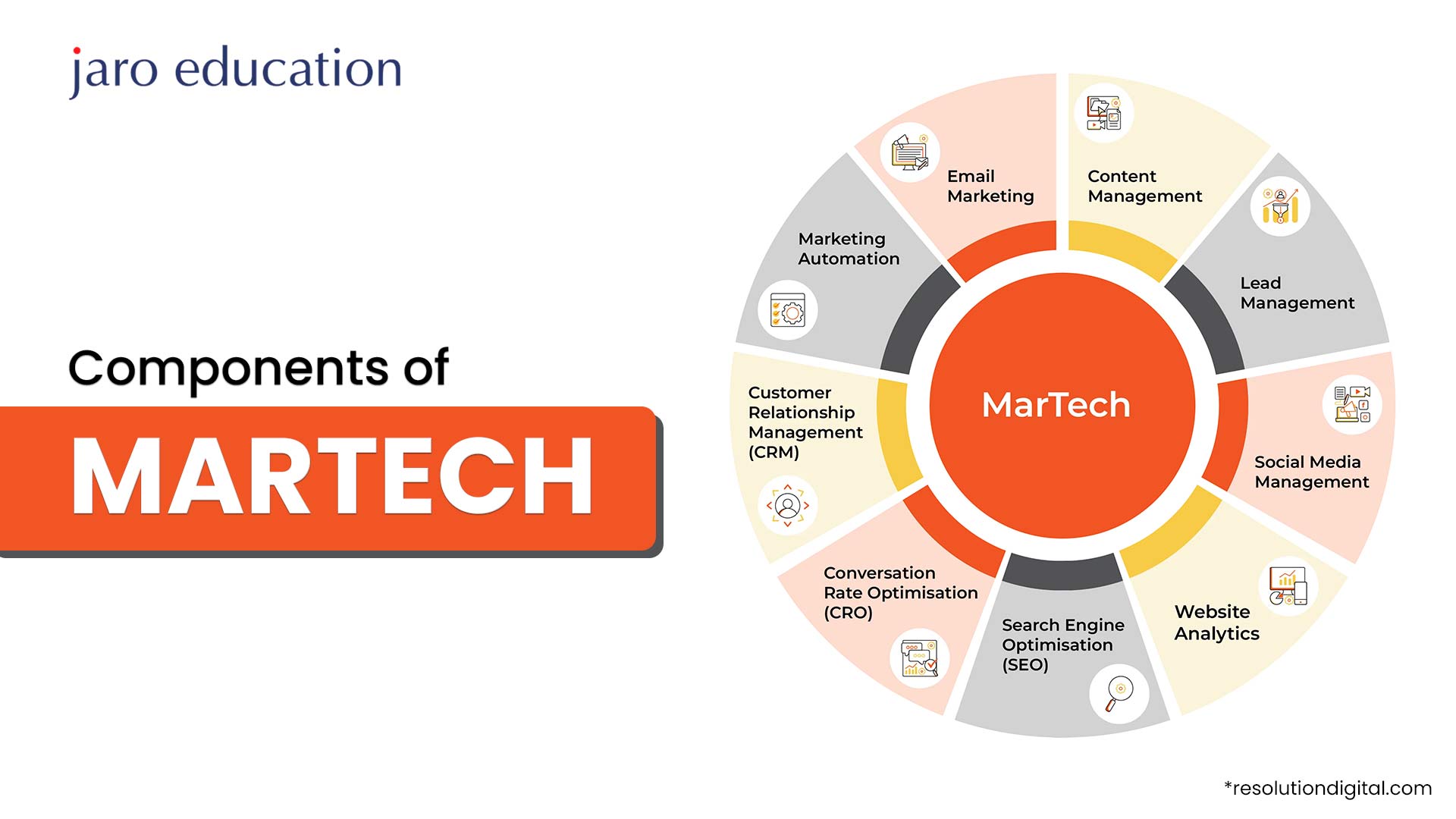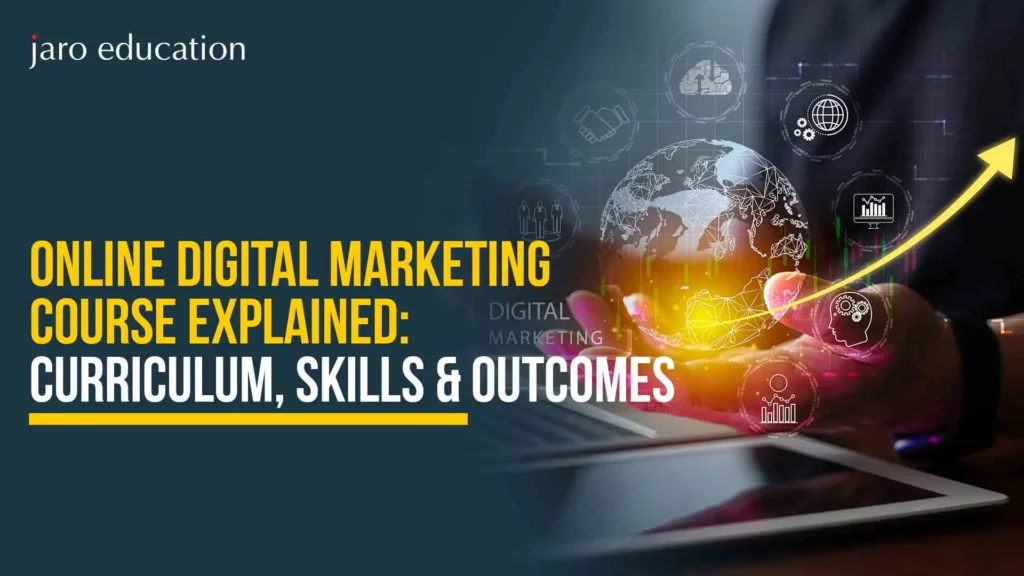Learn how to build your martech stack in 6 steps
Table of Contents

- jaro education
- 2, October 2023
- 5:00 pm
The need for the online world is ever-increasing and evolving. Every marketer has to make themselves aware of the numerous technological innovations required to get the glance of the digital audience. Martech has come into the picture as a result of this digital transformation in the field of advertising. Its presence keeps becoming prominent with every passing day as it acts as an important medium for ventures to perform strongly in the market.
The concept of “stack” in technology is growing exponentially to enhance modern marketing strategies. It involves an array of web-based tools, integrated systems, software solutions, aspects forming the backbone of an organizational infrastructure.
To make yourself well-versed in martech stack and various AI-related marketing approaches, register for the Executive Programme in Marktech and AI Driven Marketing offered by IIM Indore. By enrolling in this program, you will witness a holistic curriculum providing a comprehensive guide to succeed in the AI-driven world. With 125 hours of interactive learning, this 12-month course offers lessons on relevant topics, including customer lifecycle, strategies of digital transformation, and more.
Understanding Martech
Martech stack is a well-ordered ensemble of online platforms strategically designed to boost various digital marketing goals. The seamless integration of internal workflows through this ‘stack’ of tools, which primarily includes an Account-Based Marketing (ABM) software, Content Management System (CMS), Customer Relationship Management (CRM) system, marketing automation solution, and social media management, has become the standard operating procedure for modern marketing campaigns. All these marketing technology softwares and applications are expected to evolve along with the growth trajectory of businesses.
As content marketing operates in a landscape that keeps changing, constructing an effective tech stack is dependent on building a versatile infrastructure that can readily adapt to updates, tweaks, and refinements. Achieving this programmatic symmetry requires meticulous optimization and seamless integration of tools, with the primary goal of maximizing Return on Investment (ROI) across various platforms and searching for efficiencies that align with the company’s core values.
Components of Martech
Martech stack has two vital elements that are closely related yet different from one another: tech and software.
Software
This component is associated with programs responsible for ensuring the effortless operation of a website’s backend. Within a software stack, you’ll find an organization’s preferred operating system. With that, it also has applications that facilitate fundamental digital operations. One should consider enlisting the expertise of an independent data management specialist to collaborate with the company’s Content Marketing Officer (CMO) in shaping and executing this facet of the martech stack.
Tech
The tech facet involves various components that influence a venture’s complete infrastructure. These elements are integral for governing and optimizing the backend of a business, including computer systems, networks, and servers.
With Martech, the two elements, software and tech, can be blended into one cohesive stack engineered to elevate the efficiency of an organization’s marketing campaigns. Your martech stack should be as unique as your business, customized to enhance performance and leverage the valuable customer insights it derives. Additionally, there are some essential tools that should be fundamental components of every robust martech stack.

Tools Involved in a Martech Stack
Regardless of the size and budget of an organization, a few factors should be present when creating a martech stack. Having all of the things below might not be enough to suffice the needs of a venture; however, they form the skeletal framework that is mandatory in every martech stack.
CRM
In a business, the foundation of every success starts with customer satisfaction and engagement. It is a compulsion for an organization to curate a central hubspot in which the information concerning existing and potential customers is efficiently managed. Instead of conceiving a traditional, static CRM system, envision creating a dynamic, interactive platform that seamlessly communicates and collaborates with the other components in your martech stack through its Application Programming Interface (API). A CRM differs definitively from storing client information in documents or spreadsheets on several fronts. The most pivotal distinction is its ability to maintain up-to-the-minute data integrity, facilitated by real-time updates from the other components within the martech stack.
CMS
A Content Management System (CMS) is a crucial element in hosting a venture’s website. This is required to make the website functional and user-friendly as per the requisitions of the venture. Some enterprises opt for well-established commercial CMS platforms like WordPress, while others may opt to collaborate with a remote developer to craft a bespoke solution from the beginning.
Tools for Email Marketing
In the world of advertising, email marketing is a forefront player. It is important for a martech stack to encompass various technological systems to boost a business’s advertising objectives. Just like other components of a robust stack, email marketing tools can be as intricate or streamlined as your business demands. Whether you opt for a subscription-based Software as a Service (SaaS) solution from a company like Infusionsoft or engage a software developer to create a customized solution, ensure that the backbone of the system is firmly grounded in analytics. This enables you to finely tune and optimize your final outcomes.
Tools for Social Media
Social media has transitioned from a medium of entertainment to an indispensable promotional platform. A comprehensive martech stack is incomplete without a robust social media marketing component, which should include platforms like LinkedIn and Twitter as a baseline requirement. The feedback garnered from a company’s social media presence plays a multifaceted role in enhancing the business, enabling you to track trends and metrics and identify potential partners and customers.
6 Simplified Steps to Create a Martech Stack for a Venture
If you want to learn how to build a martech stack, here are the easy steps to do so. The following are the 6 steps you can use to create a robust martech stack.
1. Analyze the Requisition of Marketing Technology of the Business
The initial step involves going through a martech conference to check for the business needs to remain abreast with the rest of the competitors. Analyzing your goals is essential when it comes to marketing technology. These discussions play a crucial role in selecting the right CRM, CMS, and social media platforms, among others. Take the time to analyze customer data and gather insights from your marketing team on demographics, previous ad performance, lead generation, and conversions. Use these valuable insights to design your martech stack in alignment with your business’s future objectives.
2. Check Inventory and Assess the Existing Tools
After deducing accurate marketing technology goals, check and assess the tools that will equip you to reach them. Task each marketing operations team member with providing an inventory of current tools, programs, apps, and platforms in use. Check whether these tools are outdated, if there’s room for improvement, and if they align with your business’s objectives.
3. Check for Pain Points and Gaps
Post an assessment of the existing tools, prioritize acknowledging the gaps in your present martech stack. Doing so, will provide a clear understanding of the business’s requirements as a whole. Furthermore, identify specific pain points in your current setup, such as SEO or messaging challenges. Determine essential technology tools for your team’s proficiency. Address any skill gaps within your team. Analyze where time and money are needlessly expended. Objective answers to these queries prevent unnecessary investments in systems that fail to address the business’s genuine challenges to the fullest.
4. Make Future Flexibility a Key Consideration
Remember, flexibility is paramount when building a business’s martech stack. You’re supposed to build a dynamic framework that can evolve over time. Prioritize API integration to ensure your stack is responsive to data, which will steer its ongoing refinements.
Certain adaptations may necessitate the recruitment of specialists in uncharted domains. Engaging independent experts to enhance your team’s adaptability can alleviate stress and save time, mainly due to the fact that many organizations lack in-house personnel dedicated to this area of success. This approach empowers your team to navigate change effectively and remain agile in the martech landscape.
5. Make a Comparison Between Vendors and Platforms
Just like any substantial investment in a company, diligent research is essential when considering the available platforms and vendors that your industry competitors are in favor of. Dedicate time to collaboratively work with your team in testing and evaluating various systems and tools. Determine whether factors like pricing, capabilities, convenience, or other considerations will guide your choices when building your martech stack.
6. Apply and Adapt
There are many marketing technology tools and platforms that offer extensive customization options. Once you are done finalizing the ideal technology and tools for your venture, it is time to proceed with deploying and customizing the selected programs. Depending on the complexity, your existing IT team may be sufficient for implementation, or you might consider engaging an independent marketing attribution expert to kickstart the process. Keep things adjustable as per the needs of your martech stack to amply support the predefined goals of the venture.
Conclusion
Building an efficient martech stack involves careful analysis and assessment of several factors. By following the 6 steps of martech stack development, one can equip themselves to construct a martech ecosystem that aligns with their business goals and empowers their marketing efforts to the point.
If you want to up your game in AI-driven marketing and more, the Executive Programme in Marktech and AI Driven Marketing by IIM Indore can serve you the best. Learn from the experienced faculty of IIM and get the best ROI by completing the course in 12 months.









